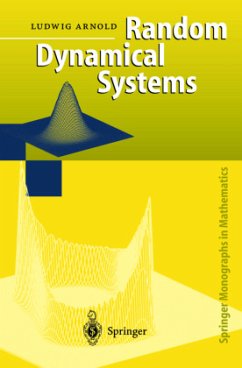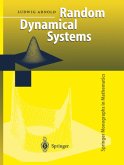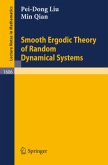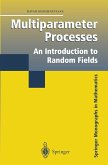The first systematic presentation of the theory of dynamical systems under the influence of randomness, this book includes products of random mappings as well as random and stochastic differential equations. The basic multiplicative ergodic theorem is presented, providing a random substitute for linear algebra. On its basis, many applications are detailed. Numerous instructive examples are treated analytically or numerically.
Background and Scope of the Book This book continues, extends, and unites various developments in the intersection of probability theory and dynamical systems. I will briefly outline the background of the book, thus placing it in a systematic and historical context and tradition. Roughly speaking, a random dynamical system is a combination of a measure-preserving dynamical system in the sense of ergodic theory, (D,F,lP', (B(t))tE'lf), 'II'= JR+, IR, z+, Z, with a smooth (or topological) dy namical system, typically generated by a differential or difference equation :i: = f(x) or Xn+l = tp(x.,), to a random differential equation :i: = f(B(t)w,x) or random difference equation Xn+l = tp(B(n)w, Xn)· Both components have been very well investigated separately. However, a symbiosis of them leads to a new research program which has only partly been carried out. As we will see, it also leads to new problems which do not emerge if one only looks at ergodic theory and smooth or topologicaldynam ics separately. From a dynamical systems point of view this book just deals with those dynamical systems that have a measure-preserving dynamical system as a factor (or, the other way around, are extensions of such a factor). As there is an invariant measure on the factor, ergodic theory is always involved.
Background and Scope of the Book This book continues, extends, and unites various developments in the intersection of probability theory and dynamical systems. I will briefly outline the background of the book, thus placing it in a systematic and historical context and tradition. Roughly speaking, a random dynamical system is a combination of a measure-preserving dynamical system in the sense of ergodic theory, (D,F,lP', (B(t))tE'lf), 'II'= JR+, IR, z+, Z, with a smooth (or topological) dy namical system, typically generated by a differential or difference equation :i: = f(x) or Xn+l = tp(x.,), to a random differential equation :i: = f(B(t)w,x) or random difference equation Xn+l = tp(B(n)w, Xn)· Both components have been very well investigated separately. However, a symbiosis of them leads to a new research program which has only partly been carried out. As we will see, it also leads to new problems which do not emerge if one only looks at ergodic theory and smooth or topologicaldynam ics separately. From a dynamical systems point of view this book just deals with those dynamical systems that have a measure-preserving dynamical system as a factor (or, the other way around, are extensions of such a factor). As there is an invariant measure on the factor, ergodic theory is always involved.








